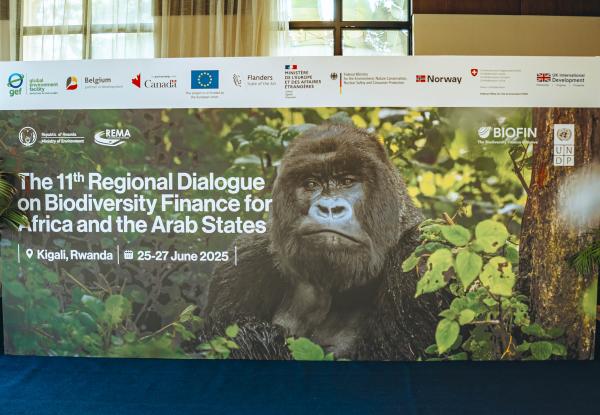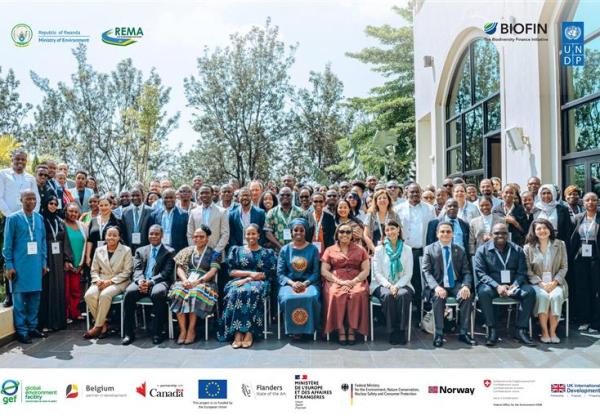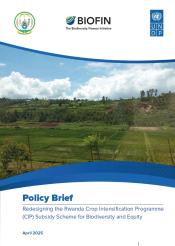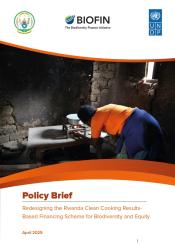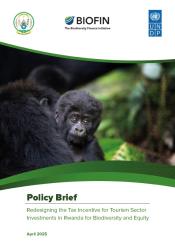Rwanda
Rwanda has diverse habitats and ecosystems that range from humid montane forests to savannahs, lakes, rivers, and wetlands which support a wide range of biodiversity. However, the Country’s biodiversity faces various threats that have led to a loss of species, shrinkage in population sizes, and ecosystem degradation. Rwanda’s development agenda recognizes the important and central role that biodiversity and natural resources play in terms of supporting the country’s economic growth, and livelihoods as well as in the provision of critical ecosystem services such as water, soil erosion and flood control as well as climate change mitigation. Therefore, the conservation of the environment and natural resources has been well integrated in the country’s development blueprints such as Vision 2020 Economic Development and Poverty Reduction Strategy (EDPRS II); Vision 2050; and the National Strategy for Transformation (NSTI2018-2024).
Funding for Biodiversity conservation has been limited and grossly inadequate for implementing proposed environmental activities in different sectors. The major sources of financing biodiversity conservation have been Government, development Partners and some international NGOs. Part of the reason why funding levels have been low from the various actors is due to lack of a holistic approach to financing biodiversity conservation that takes into consideration the potential of biodiversity in poverty reduction, economic development, health, and sanitation among others. Therefore, there is a need to diversify funding sources and explore other mechanisms.
Finance Solution #1: Mainstreaming biodiversity into the environmental impact assessment process
- Institutional Results: Environmental impact assessment experts trained in biodiversity-inclusive EIA guidelines. A total of 149 number trained disaggregated as follows: Women: 47 Men: 102
- Policy Results: Revised EIA ministerial order to include updated EIA biodiversity inclusive Guidelines
- Avoid Future Expenditure: The experts of the EIA have been trained to consider biodiversity in EIA process which will help avoid the future expenditure.
- Biodiversity Impact: In long-term, we envisage a positive impact on biodiversity, including the preservation and conservation of sensitive or critical areas and species.
Finance Solution #2: Fully channeling environmental fees and fines through a dedicated biodiversity facility in FONERWA
- Institutional Results: Establishing a biodiversity finance facility within the Rwanda Green Fund (FONERWA). This work is currently ongoing.
- Realign Revenues: Environmental fees and fines are channeled into one institution (the Rwanda Green Fund). Development of the collection systems for both fees and fines is currently being developed by IREMBO as part of streamlining the collection system.
- Financial Results: For the period January to June 2023, a total of USD 112, 084 in relation to environmental fees and fines were collected and channeled into FONERWA.
Finance Solution 1: Mainstreaming biodiversity in the EIA processes
Since 2005, Rwanda has mandated Environment Impact Assessments (EIA) for project developers, as stipulated in Organic Law N° 04/2005. However, these assessments have lacked explicit consideration for biodiversity, and the quality of EIA reports has been inconsistent. Biodiversity was absent from the 2006 EIA guidelines issued by REMA. The 2018 Environment Law (Law N°48/2018) and Ministerial Order No 001/2019 further formalized EIA procedures.
To align development investments with biodiversity conservation, Rwanda has integrated biodiversity into its EIA system through the BIOFIN II Project. This includes updating the General EIA guidelines and 11 sectoral guidelines for various projects. The objectives include capacity building, cost reduction, policy alignment, and biodiversity preservation.
The short-term impacts encompass project designs considering sensitive habitats and species, immediate mitigation measures for biodiversity protection. In the long term, these efforts aim to preserve and conserve biodiversity, enhance ecosystem resilience. This initiative reflects Rwanda's commitment to sustainable development and biodiversity conservation.
Finance Solution 2: Fully Channelling Environmental Fees and Fines through a dedicated biodiversity facility in FONERWA
In Rwanda, environmental fees, fines, penalties, and licenses are channeled into the national green fund, FONERWA, to support environmental and climate initiatives. However, since 2012, FONERWA has only accumulated $1.4 million, just 3.4% of its total revenue, with significant annual fluctuations. BIOFIN, I identified issues in fee and fine collection.
Local government-collected fines often face "leakages," and fees, although traceable, may not be collected as required. Recent amendments addressed these challenges; an electronic system for fee and fine collection is being developed to reduce leakages and enhance accountability. A proposal for a 'biodiversity facility' within FONERWA aims to create a revolving fund from environmental revenue, attracting additional funding sources.
Objectives include improving enforcement, generating domestic resources, building institutional capacity, and avoiding future expenditures. Short-term impacts involve increased revenue for biodiversity conservation. In addition, the long-term goals include expanding conservation projects, enhancing biodiversity monitoring and research Etc.…
Finance Solution 3: Repurposing potential harmful subsides to biodiversity in Rwanda
A study in Rwanda aims to repurpose harmful subsidies to biodiversity to promote sustainable resource management practices and ensure the long-term availability of natural resources. The study will identify and map negative subsidies to biodiversity and propose new positive subsidies for the government of Rwanda. This initiative will have financial, institutional, policy, and regulatory implications, ultimately leading to long-term biodiversity impact.
Objectives include redesigning harmful subsidies to reduce activities causing environmental degradation and biodiversity loss, supporting sustainable agricultural practices, empowering local communities for sustainable livelihoods, and developing policies prioritizing biodiversity conservation.
In the short term, the impact will include immediate financial relief and support for the transition, although initial resistance and challenges may be encountered. In the long term, the study aims to promote sustainable practices, achieve positive environmental outcomes, enhance economic resilience, and contribute to biodiversity conservation and climate change mitigation.
The Biodiversity Finance Policy and Institutional Review (PIR) has been completed and it reviewed the challenges and opportunities surrounding the current status and potential trajectories of Rwanda's biodiversity and ecosystem finance context. The objective of this report was to analyze the adequacy of current policies, the existence of policy gaps, the translation of policies into practice, the role of the broader policy environment in influencing existing practices, the roles, responsibilities, and institutional framework to finance and manage biodiversity and existing finance mechanisms, important subsidies, laws, and trends around biodiversity finance.
The Biodiversity Expenditure Review (BER) in Rwanda examined that from 2011-2017, biodiversity related expenditure accounted for for only 0.5% to 0.9% of the total central government budget, on average external sources of funds have were 56 percent while the domestic resources allocation accounted for 44 percent. The combined aid dependency, fluctuations in biodiversity expenditures, and low biodiversity mainstreaming in the natural resource sector create high uncertainty in future biodiversity finance and management in Rwanda.
The Finance Needs for implementing Rwanda's NBSAPII were estimated over two timelines; 2018/2019 to 2023/24 in line with the National Strategy for Transformation 1 (NST1), and 2018/19 to 2029/30 in line with the SDGs. The estimated cost of implementing the prioritised activities in the NBSAP is between RWF 82.6 to 91.2 billion (equivalent to $97.5 and 107.7 million) for the period 2018/19 - 2023/24 (SDGs timeframe) and RWF 37.5 to 41.0 billion (equivalent to $ 31.8 to 33.9 million) for the period 2018/19 - 2013/24 (NST1 timeframe). The distribution of projected costs showed that the capital costs are 5% higher than recurrent costs, with recurrent costs requiring 46% of the budget while capital expenditures requiring 54% of the budget. This is not in line with Government's strategy to have higher capital investments recurrent expenditures for biodiversity.
